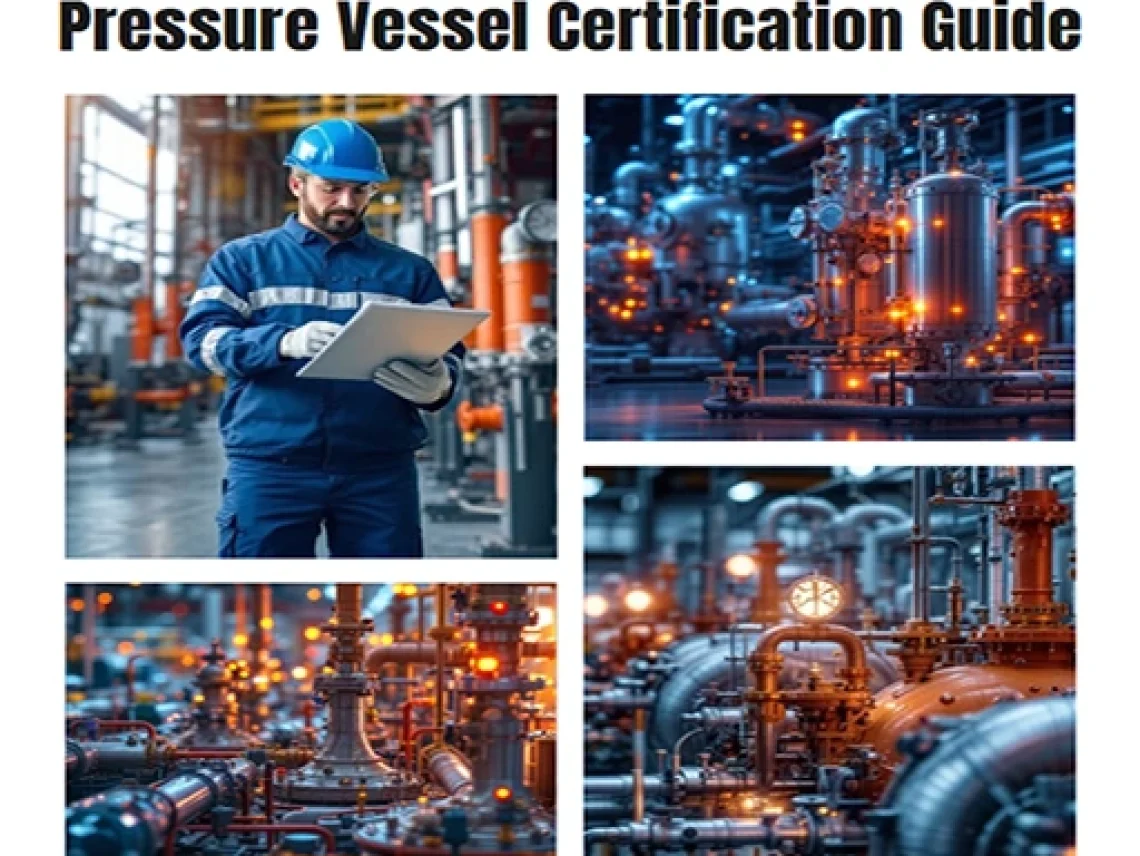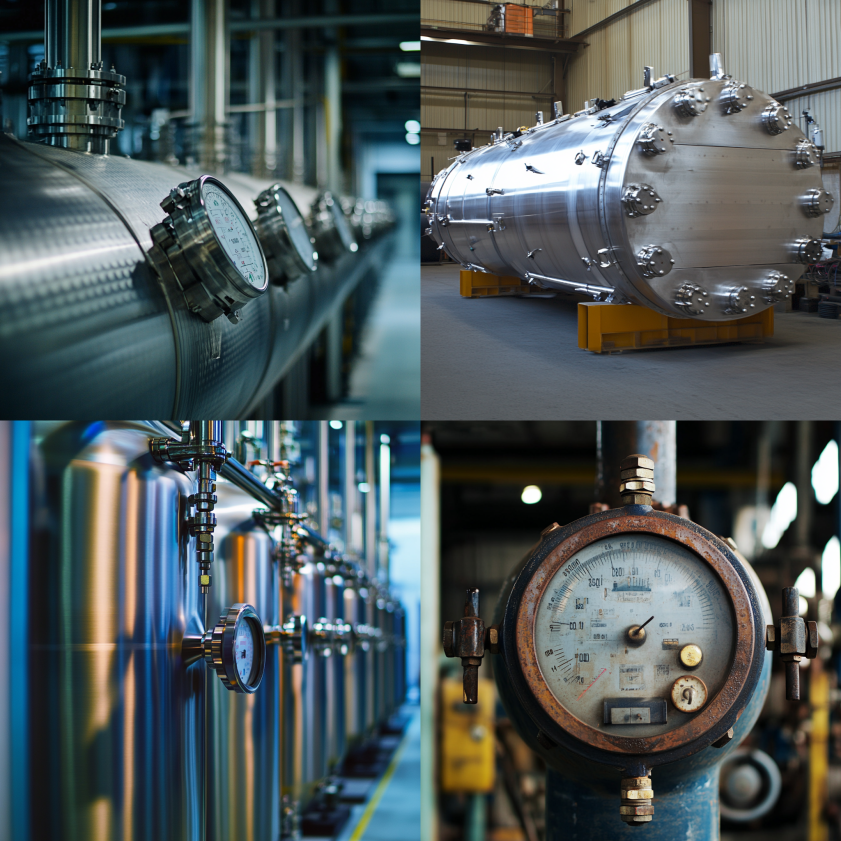Do Pressure Vessels Need Certification?

Table of Contents
ToggleUnderstanding Pressure Vessel Certification
In industrial environments, safety isn’t just a best practice—it’s essential. Pressure vessel certification ensures that pressurized equipment is built and maintained according to rigorous safety and engineering standards. But what exactly is pressure vessel certification, and is it always required?
The short answer is yes. In nearly every application, from oil refineries to food processing plants, pressure vessel certification is both a legal requirement and a safety imperative. Certification confirms that the vessel meets strict design, material, fabrication, and inspection criteria to prevent failures that could result in catastrophic damage or injury.
Industries that rely on pressure vessel certification include:
- Oil and Gas
- Petrochemical
- Power Generation
- Food and Beverage
- Pharmaceutical Manufacturing
Without certified pressure vessels, these industries would face increased risks, legal exposure, and regulatory violations.
Why Pressure Vessel Certification Matters
Pressure vessel certification provides assurance that a vessel can safely handle high-pressure gases or liquids. Certification covers:
- Structural design specifications
- Approved construction materials
- Quality fabrication processes
- Verified testing procedures
- Regular inspection requirements
Compliance is not just about avoiding penalties—it’s about protecting personnel, assets, and the environment.
Regulatory Standards and Authorities
Multiple organizations enforce pressure vessel certification through international and regional codes. These include:
ASME Boiler and Pressure Vessel Code (BPVC)
The ASME BPVC is the most recognized pressure vessel certification standard in the U.S. Vessels that comply may carry the ASME “U” stamp.
Pressure Equipment Directive (PED)
In the European Union, the PED regulates pressure vessel certification for all equipment entering the EU market.
Canadian Standards Association (CSA B51)
In Canada, CSA B51 governs pressure vessel certification, supported by the CRN system for provincial design registration.
National Board Inspection Code (NBIC)
NBIC covers the repair and inspection phase post-installation, and is required in many U.S. jurisdictions for ongoing pressure vessel certification compliance.
When Certification Is Required
Pressure vessel certification is typically mandatory when:
- Pressure exceeds 15 psi (in many U.S. jurisdictions)
- The vessel is used in public, industrial, or hazardous environments
- The vessel stores flammable, toxic, or high-energy substances
Exemptions may apply to very low-pressure or small-capacity vessels, but local regulations vary—always check with your jurisdiction.
Certification Is Non-Negotiable
If you’re in an industry that uses pressurized equipment, pressure vessel certification isn’t optional—it’s a cornerstone of safe, legal, and efficient operations. By working with certified manufacturers and staying compliant with ASME, PED, CSA, or NBIC standards, you reduce liability and increase reliability.
When Is Certification Mandatory?

While certification is almost always recommended, it becomes mandatory under certain conditions. Here’s a breakdown of scenarios where certification is required:
1. Pressure Thresholds
Most standards classify a device as a pressure vessel if it operates above 15 psi (pounds per square inch). Anything operating below this may be exempt from stringent certification—though local laws may still impose certain standards.
2. Volume and Capacity
In addition to pressure, the volume of the vessel can trigger certification requirements. A small coffee maker boiler may not need ASME certification, but a 2,000-gallon ammonia tank absolutely will.
3. Contents
The nature of the substance being stored is another key factor. Vessels containing hazardous gases, flammable liquids, or corrosive substances are tightly regulated and must meet higher safety standards.
4. Jurisdiction and Application
In the U.S., state laws and insurance requirements determine certification. For example, a steam boiler in a hospital in New York may need different documentation than the same boiler used in a food processing plant in Texas.
Case Example:
A chemical plant in Louisiana was fined over $100,000 in OSHA violations after a non-certified pressure vessel ruptured. The investigation revealed that the vessel lacked the proper design and pressure testing records. Had it been ASME-certified, the incident could have been prevented.
How Certification Works
Understanding how a pressure vessel gets certified provides insight into why the process is so crucial. Here’s a step-by-step breakdown:

Step 1: Design Review
Engineers design the vessel using code-calculated wall thicknesses, stress tolerances, and safety factors. These designs are then submitted to regulatory authorities for review.
Step 2: Material Verification
Only materials listed and approved under the governing code (e.g., ASME Section II) can be used. Material traceability is crucial throughout the process.
Step 3: Fabrication and Welding
Manufacturers must follow approved welding procedures, and welders need to be certified for those specific processes. All welds are subject to Non-Destructive Testing (NDT) like radiography or ultrasonic testing.
Step 4: Inspection and Testing
Before delivery, the vessel undergoes hydrostatic or pneumatic testing, visual inspections, and sometimes burst testing to validate its strength.
Step 5: Documentation and Certification Stamp
Once all criteria are met, the certifying body issues a stamp (such as ASME’s “U” stamp), and a Manufacturer’s Data Report is created for traceability.
Wrapping It Up: Why Certification Isn’t Optional
Pressure vessel certification isn’t a bureaucratic hurdle—it’s a critical safety protocol rooted in decades of engineering best practices and lessons learned from past failures.
By ensuring that your pressure vessel is certified:
- You protect your workforce from dangerous accidents.
- You comply with legal and insurance requirements.
- You preserve the integrity of your industrial processes.
- You can future-proof your operations against costly shutdowns and liability.
In essence, certification is an investment in safety, quality, and operational excellence.
When in doubt, work with an experienced pressure vessel manufacturer that emphasizes certification compliance from design to delivery. At Red River, we help clients navigate these requirements every day.
Need a reliable partner?
Red River specializes in the design and manufacturing of pressure vessels. We also fabricate related items such as prefabricated spools and skid packages.
Reach out to us today and experience the Red River difference. Where American-made products and American Values come together, we care more.
Frequently Asked Questions
1. What is pressure vessel certification?
It’s a formal process verifying that a pressure vessel complies with recognized safety and engineering standards like ASME BPVC or PED.
2. Who certifies pressure vessels?
Certification is handled by regulatory bodies such as ASME, PED (EU), CSA (Canada), and the National Board in the U.S.
3. Are all pressure vessels required to be certified?
No, but most used in commercial and industrial settings, especially above 15 psi or storing hazardous materials, must be certified.
4. What happens if a pressure vessel isn’t certified?
It may be deemed illegal to operate, and it greatly increases the risk of equipment failure, fines, and workplace accidents.
5. Can a used pressure vessel be certified?
Yes, but it must undergo rigorous inspection and meet all current safety codes, which may include repairs and upgrades.
6. How long does certification last?
It remains valid until major alterations occur or periodic inspections dictate a recertification. Some jurisdictions require annual checks.
7. Is ASME the only standard for certification?
No other countries and regions use their own codes, such as PED in the EU and CSA in Canada.
8. What are the costs involved in certification?
Costs vary based on design complexity, testing, materials, and geographic location. However, certification is far less costly than fines or failures.
Key Takeaways
- Do pressure vessels need to be certified? Absolutely—especially when used in regulated industries or high-pressure applications.
- Certification protects people, property, and operations through proven engineering and inspection processes.
- Standards like ASME, PED, and CSA provide the framework for safe design and operation.
- Failure to certify can lead to legal consequences, safety risks, and massive repair costs.
- Partnering with a certified manufacturer like Red River ensures peace of mind and regulatory compliance from day one.
Solutions
In the realm of industrial solutions, Red River emerges as a pioneer, offering a diverse range of custom-engineered products and facilities. Among our specialties is the design and production of Custom/OEM Pressure Vessels, meticulously crafted to meet individual client requirements, ensuring performance under various pressure conditions. Our expertise extends to the domain of prefabrication, where Red River leads with distinction.
The company excels in creating prefabricated facilities, modules, and packages, reinforcing its stance as a forerunner in innovation and quality. This proficiency is further mirrored in their Modular Skids offering, where they provide an array of Modular Fabricated Skid Packages and Packaged equipment. Each piece is tailored to client specifications, underlining their commitment to delivering precision and excellence in every project they undertake.
